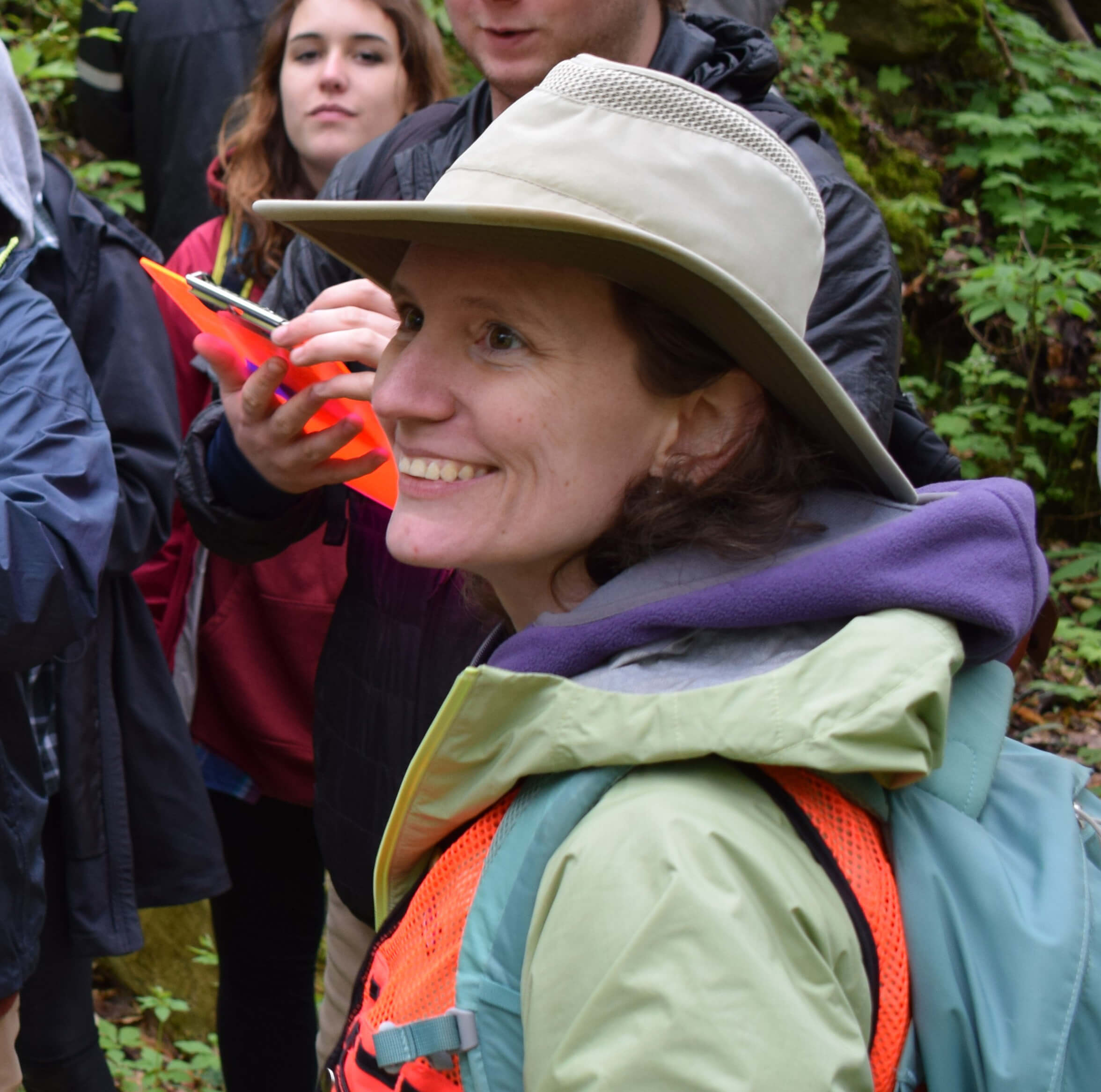 Jennifer Gifford
Jennifer Gifford
Associate Professor,
Geology and Geological Engineering
jngiffor@olemiss.edu
118F Carrier Hall, University, MS 38677
Google Scholar Profile
ResearchGate: Jennifer_Gifford2
Experience
University of Mississippi – Associate Professor, 2021- present
University of Mississippi – Assistant Professor, 2015-2021
St. Lawrence University – Visiting Assistant Professor, 2013-2015
University of Florida – Teaching/Research Assistant, 2005-2012
Education
University of Florida – Ph.D., Geology, 2013
University of Florida – M.S., Geology, 2008
Syracuse University – B.S., Geology, 2005
Research interests
- Geologic mapping, geochronology and geochemistry of the Bighorn mountains, Wyoming
- Geologic evolution of the Mississippi river using detrital zircons to trace provenance and drainage patterns
- Tectonics and geologic history of the Medicine Hat Block, Montana & Canada using geochronology and geochemsitry
- Tectonic history of Laurentia and the formation of the Wyoming craton.
RECENT PROJECTS
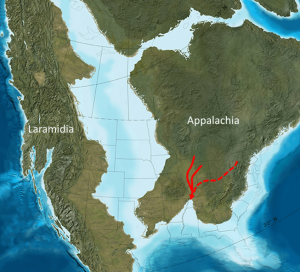 Quantifying the Birth of the Mississippi River: Evidence from the Cretaceous McNairy Sand
Quantifying the Birth of the Mississippi River: Evidence from the Cretaceous McNairy Sand
This project will answer a major question related to the ancient Mississippi River through the use of the Maastrichtian (~70 million years ago (Ma)) McNairy Formation of northern Mississippi (MS) and southern Tennessee (TN): What is the nature of deposition of the ancient Mississippi river in terms of age and tectonic environment of origin (Mississippi Embayment). Blum and Pecha (2014) observed a major change in the dominant drainage trajectory of the ancient Mississippi River in the late Cretaceous (between ~100 – 60 Ma), from west-flowing across the continent to south-flowing to the Mississippi Embayment. This successfully narrowed down the time-span of the formation of the Mississippi river to ~40 Ma. Zircon from samples spreading the geographic extent of the eastern Mississippi Embayment will be analyzed for U-Pb radiometric detrital age spectrum that will reveal the nature of the depositional systems along the southern margin of Appalachia during latest Cretaceous time following the recession of the Western Interior Seaway. These data will be compared to data from the Illinois (IL) Basin deposits of the McNairy Fm. to test the model of Blum and Pecha (2014), and to further narrow down the birthdate of the Mississippi river. Figure modified from Blakey, 2017.
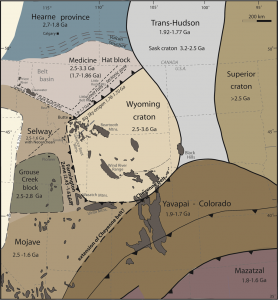 An Investigation into the Geochemical Character of the Medicine Hat Block
An Investigation into the Geochemical Character of the Medicine Hat Block
The Medicine Hat Block (MHB) of southern Alberta and northern Montana is a largely concealed province of Archean and Paleoproterozoic rock buried by younger supracrustal successions. The MHB was involved in a complex collision between the Archean Hearne and Wyoming provinces during the formation of the Great Falls Tectonic Zone (GFTZ), Trans Hudson Orogen (THO) and Vulcan Zone during the amalgamation of Laurentia. However, its role in this collision is poorly defined by limited high precision geochronolgy and geochemisty. Xenoliths recovered by the Geological Survey of Canada from Eocene minette dikes and boreholes in the MHB north of the Wyoming craton include a population of gneisses, granulites, monozites, tonalities, amphibolites, and diorites sampling the otherwise concealed MHB crust. New whole-rock geochemistry data including major-elements, trace-elements, Nd-isotopes, and Pb-isotopes from these samples will improve understanding of the age and origins of the MHB crust.
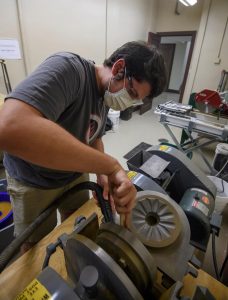 Geochronological study of the Whalen Group, Hartville Uplift southeast margin of Wyoming craton
Geochronological study of the Whalen Group, Hartville Uplift southeast margin of Wyoming craton
The Hartville Uplift, southeast margin of the Archean Wyoming craton, has not been studied in depth. There are a few hypotheses explaining the formation and tectonics behind the Hartville Uplift. The lead hypothesis was published by Sims et al. (1996) suggesting that the uplift was a result of 4 episodes of deformation starting with Whalen group deposition followed by fold nappe, which possibly resulted from an early phase of the 2nd deformation. The 2nd deformation event was folding on east-trending axes followed by a folding on northeast trending axes and ending with a “scattered small recumbent folds in the southernmost part of uplift” (Sims et al., 1996). Although this hypothesis is the most common, it is not yet fully supported and requires additional data. A missing piece is the metasupracrustal rocks which were assigned to the Whalen Group by Smith (1903). This project will be focusing on geochronological dating and geochemical study of the Whalen Group.
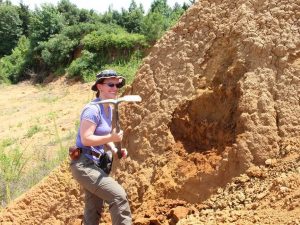 Timing of Late Cretaceous Gulf Coast Volcanism
Timing of Late Cretaceous Gulf Coast Volcanism
The Upper Cretaceous Ripley Formation in the Mississippi Embayment consists of ~240 feet (73 m) of fossiliferous clay, sand, and calcareous sand beds. Lateral facies variations have complicated historical stratigraphic correlations between locations, but recent stratigraphic revisions in Mississippi recognize a lower transitional clay facies, a limestone, marl, and calcareous sand facies informally named the Troy beds, a sandy upper Ripley facies, and the formally named Chiwapa Sandstone Member. Ammonite biostratigraphy places the contact between the Chiwapa and the overlying Owl Creek/Prairie Bluff at ~68.5 Ma. The upper Ripley facies contains the Pontotoc Bentonite, which was identified north of the town of Pontotoc, Mississippi, in 1943. No radiometric dates have been obtained from this bentonite, but litho- and biostratigraphy indicate that the bentonite is younger than known volcanism from the Jackson Dome and related structures. Recent investigations resulted in the discovery of a previously unknown bentonite bed south of the town of Pontotoc. The purposes of the present investigation are 1) to test whether the new bentonite bed is correlative to the Pontotoc Bentonite and 2) to recover volcanogenic zircons for U-Pb and Hf dating to better constrain timing of volcanism and chronostratigraphy of the Ripley Formation.
PAST AND PRESENT STUDENTS
Manuel Eli, M.S. (current) Tectonic Origin of the Mississippi River Using Evidence from the McNairy Sand
Mohammed Al Harthy, M.S. (2021) Geochronological study of the Whalen Group, Hartville Uplift southeast margin of Wyoming craton.
Elizabeth Vitale, M.S. (2019) Deciphering Late Cretaceous volcanism within Ripley Formation bentonites using U-Pb detrital zircon geochronology.
Blake LaDouceur, M.S. (2019) Utilizing single-grain zircon isotope data to investigate the significance of the Medicine Hat Block (southern Alberta, northern Montana) in the assembly of Laurentia
Dakota Kolb, M.S. (2017) Re-Evaluating the tectonic model for the Arbuckle Mountains Oklahoma by spatial and geometric analysis of stratigraphic and structural trends.